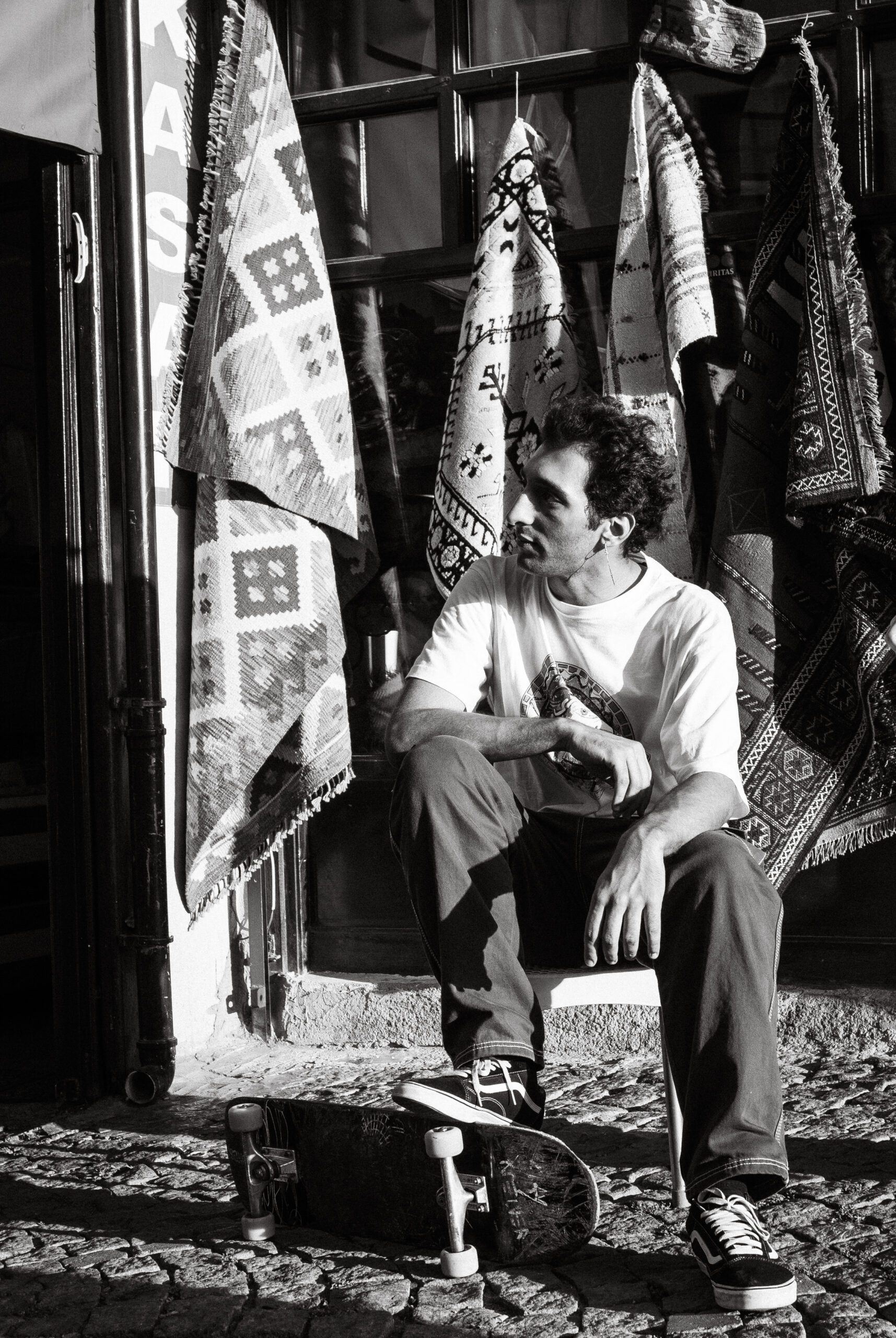Skateboarding is an exciting and exhilarating sport, but if you’re just starting out, it can also be a bit daunting. That’s why it’s important to familiarize yourself with the fundamental skateboarding basics before you start hitting the ramps and performing tricks. Whether you’re a complete newbie or have some experience, this article will give you a comprehensive overview of the essential skills and techniques that every beginner skateboarder should know. From finding the right skateboard, to maintaining balance and mastering the art of pushing, you’ll have all the information you need to kickstart your skateboarding journey and build a solid foundation for future tricks and stunts. So grab your board, and let’s get started on this exciting ride! Skateboarding is an exciting and challenging sport that requires a combination of skill, balance, and style. Whether you’re a beginner just starting out or someone looking to improve their skateboarding skills, it’s important to understand the fundamental basics of skateboarding. In this comprehensive guide, we will walk you through everything you need to know to get started in the world of skateboarding.
Choosing the Right Skateboard
The first step in your skateboarding journey is choosing the right skateboard for you. Skateboards come in various shapes, sizes, and styles, each designed for specific types of skating. Understanding the different types of skateboards will help you make an informed decision.
Understanding the Different Types of Skateboards
There are several types of skateboards available, including street, cruiser, and longboards. Street skateboards are designed for tricks and maneuvers on flat surfaces, while cruiser boards are ideal for commuting and cruising around town. Longboards, on the other hand, are perfect for downhill riding and long-distance cruising.
Selecting the Appropriate Skateboard Size
Skateboards come in different sizes, and selecting the appropriate size is crucial for your comfort and control. The size of the skateboard is determined by the width of the deck, usually measured in inches. A wider deck provides more stability, while a narrower one offers more maneuverability. It’s important to choose a skateboard size that suits your body type and skating style.
Choosing the Right Deck Material and Shape
Skateboard decks are typically made of wood, specifically maple or bamboo. Maple decks are known for their durability and are the most commonly used. Bamboo decks, on the other hand, are lightweight and flexible, making them ideal for cruising and carving. Additionally, skateboards come in various shapes, such as popsicle, cruiser, and old school. Each shape serves a different purpose and offers a unique riding experience.
Picking the Right Trucks and Wheels
Trucks are the metal T-shaped components that attach the wheels to the skateboard deck. They play a crucial role in how your skateboard turns and maneuvers. When choosing trucks, consider their width, height, and the type of riding you plan to do. Additionally, wheels come in different sizes, durometers (hardness), and shapes. Softer wheels provide better grip, while harder wheels are more suitable for tricks and slides.
Essential Protective Gear
Skateboarding can be thrilling, but it’s essential to prioritize safety. Wearing the right protective gear will greatly reduce the risk of injury. Here are the essential protective gear items you need:
Wearing a Helmet
A helmet is the most important protective gear for skateboarding. It protects your head from potential injuries and can save your life in case of a fall or collision. Look for a well-fitting helmet that meets safety standards and has sufficient padding for comfort.
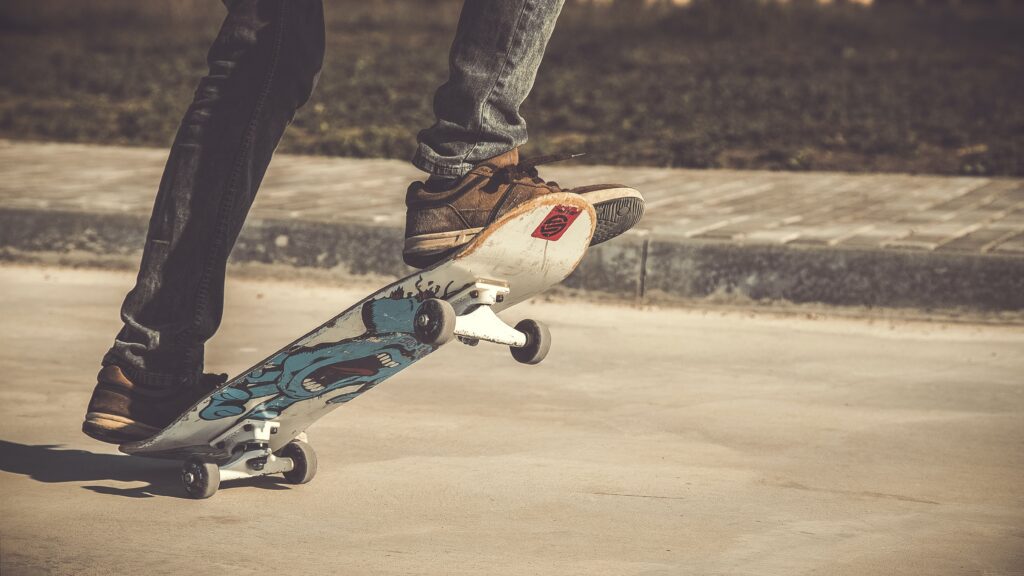
Using Knee and Elbow Pads
Knee and elbow pads provide additional protection for your joints, reducing the risk of scrapes, bruises, and fractures. Look for pads that fit securely and offer ample padding to cushion impacts.
Selecting the Right Shoes
Proper footwear is crucial for skateboarding. Look for skate shoes that are specifically designed for skateboarding and provide good grip on the board. They should also have reinforced toe caps and durable materials to withstand the wear and tear of skateboarding.
Considering Wrist Guards
Wrist guards are often overlooked but are equally important when it comes to protecting your wrists from fractures and sprains. They provide support and stability to your wrists, reducing the risk of injury in case of a fall.
Getting Familiar with the Skatepark
Skateparks are the perfect place to practice and improve your skateboarding skills. However, it’s important to familiarize yourself with the skatepark layout and understand skatepark etiquette to ensure a safe and enjoyable experience.
Understanding Skatepark Layout
Skateparks are typically designed with different sections or features, such as ramps, rails, bowls, and banks. Take the time to explore and understand each feature, as they offer unique challenges and opportunities for skill development.
Learning Skatepark Etiquette
Skatepark etiquette is essential for maintaining a positive and respectful skateboarding community. It involves following certain unwritten rules, such as taking turns, being aware of others, and not hogging the obstacles.
Identifying Different Skatepark Obstacles
Skateparks are filled with various obstacles that provide opportunities for different tricks and maneuvers. These obstacles can include ramps, rails, stairs, and ledges. Understanding each obstacle and its purpose will help you navigate the skatepark with confidence.
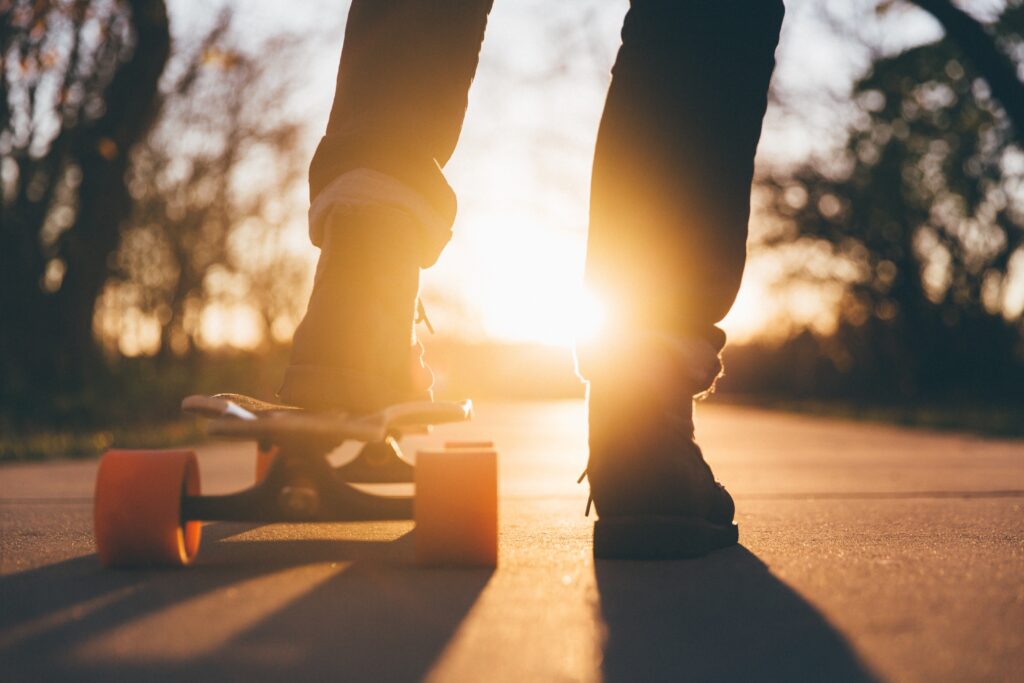
Observing and Learning from More Experienced Skaters
Skateboarding is a sport that thrives on creativity and innovation. Take the time to watch and learn from more experienced skaters at the skatepark. Observe their techniques, tricks, and overall style to improve your own skills and develop your own unique approach to skateboarding.
Mastering the Stance and Balance
Having a strong foundation in stance and balance is crucial for any skateboarder. The way you position your feet and maintain a low center of gravity greatly affects your overall stability and maneuverability.
Regular vs. Goofy Stance
Skateboarders have two main stances: regular and goofy. In a regular stance, your left foot is in the front, while in a goofy stance, your right foot is in the front. Experiment with both stances to find which one feels more natural and comfortable for you.
Positioning Your Feet Properly on the Skateboard
Proper foot placement is essential for maintaining balance and control on the skateboard. For regular stance, your front foot should be angled diagonally across the skateboard, while your back foot is positioned perpendicular to the board. Adjust the position of your feet until you find a comfortable and stable stance.
Maintaining a Low Center of Gravity
Keeping a low center of gravity is crucial for stability and control. Bend your knees slightly and crouch down as you ride to maintain a lower center of gravity, which will help you navigate obstacles and perform tricks more efficiently.
Developing Balance through Practice
Balance is a fundamental skill in skateboarding and is developed through consistent practice. Start by practicing stationary balance exercises, gradually progressing to riding in a straight line, and eventually attempting tricks. With time and practice, your balance will improve, allowing you to tackle more advanced tricks and maneuvers.
Pushing and Picking Up Speed
Pushing is an essential skill in skateboarding as it allows you to gain speed and maintain momentum. Mastering proper pushing techniques will greatly improve your overall skateboarding experience.
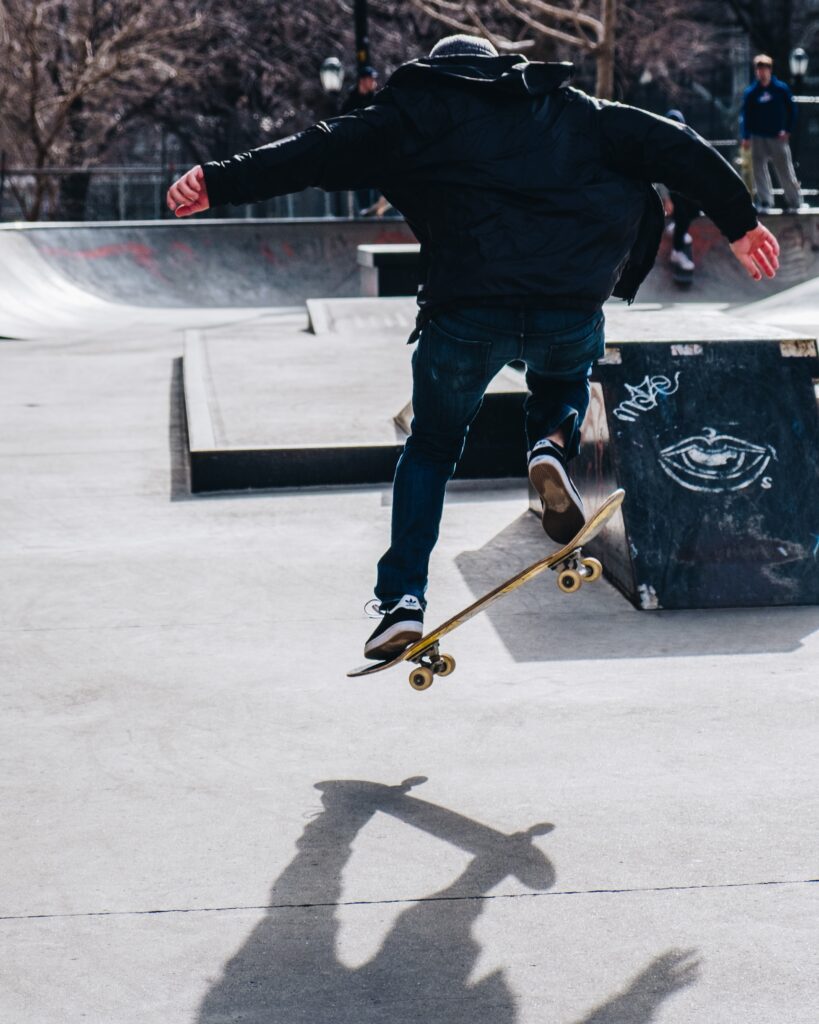
Proper Foot Placement for Pushing
To push properly, place your front foot on the skateboard deck, slightly angled toward the nose. Your back foot should push off the ground, propelling you forward. Use the ball of your back foot to push against the ground and generate momentum.
Pushing Technique and Timing
Push smoothly and consistently by extending your back leg and using a kicking motion. The timing of your pushes is critical to maintain a steady speed. Push with your back foot while transferring your weight to your front foot, then repeat the process to gain momentum.
Maintaining Speed and Momentum
Once you’ve gained speed through pushing, it’s essential to maintain it. Focus on maintaining a smooth ride by distributing your weight evenly on both feet and using small adjustments to steer and control your speed.
Using Your Back Foot to Steer
Your back foot plays a crucial role in steering and controlling your skateboard. By applying pressure on different areas of the tail, you can turn in various directions. Experiment with shifting your weight and applying different amounts of pressure to find the best steering techniques that work for you.
Basic Skateboarding Maneuvers
Mastering basic skateboarding maneuvers is an important step in progressing your skills. These maneuvers will set the foundation for more advanced tricks and allow you to navigate different terrains and obstacles with ease.
Mastering the Ollie
The Ollie is considered the fundamental trick in skateboarding and forms the basis for many other tricks. It involves jumping with the skateboard by popping the tail against the ground, sliding your front foot up, and leveling out the board in mid-air.
Performing a Kickturn
A kickturn is a basic maneuver that involves lifting the front wheels of your skateboard off the ground and pivoting the board in the desired direction. It allows you to change direction quickly and navigate obstacles, such as curbs or ramps.
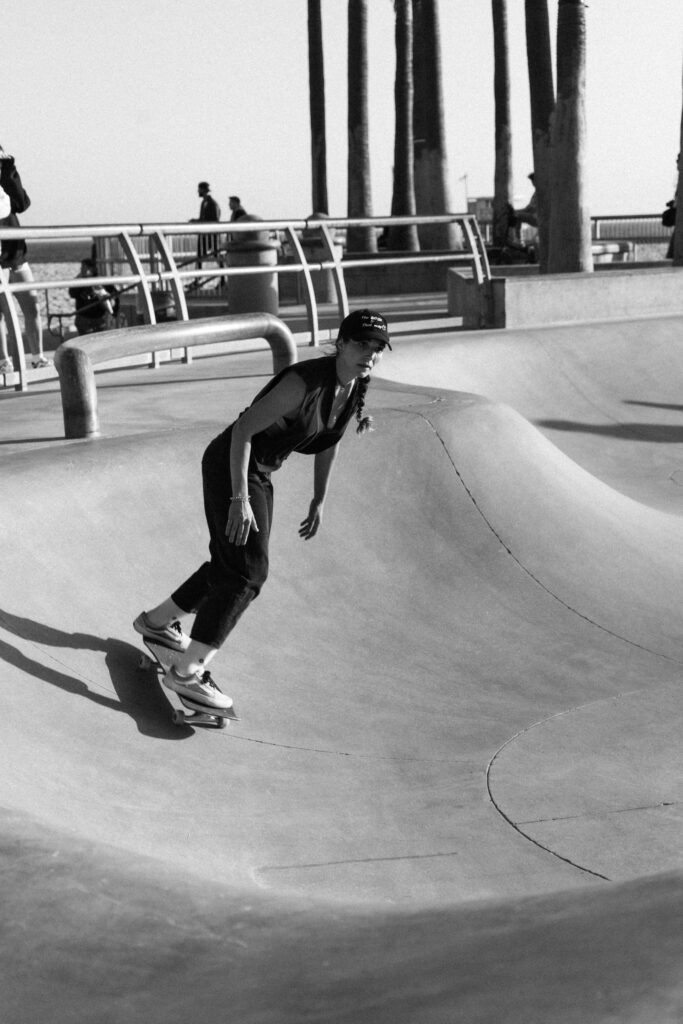
Practicing Tic-Tacs
Tic-Tacs are a series of small movements that allow you to make quick adjustments to your board’s trajectory. By shifting your weight and applying pressure on the edges of the deck, you can create small turns and maintain balance during tight spaces or when navigating obstacles.
Learning to Manual and Nose Manual
Manuals are tricks that involve balancing on either the front or back wheels of your skateboard while riding on two wheels. By shifting your weight, you can maintain balance and control while riding in a manual position. Learning to manual and nose manual is essential for progressing to more advanced tricks and incorporating technical elements into your skateboarding.
Understanding Board Control and Body Movements
Board control and body movements are vital aspects of skateboarding. By utilizing your body and making subtle adjustments, you can control the direction, speed, and flow of your skateboard.
Bending Your Knees for Stability
Bending your knees serves as a shock absorber and provides stability while riding. It allows you to absorb impact and maintain control over rough surfaces. Keep your knees slightly bent as you ride, adjusting the degree of flexion depending on the terrain or trick you’re performing.
Shifting Your Weight for Turning
Turning is achieved by shifting your weight and applying pressure on different parts of the board. To initiate a turn, lean in the direction you want to go and apply pressure on your toes or heels. By understanding weight distribution and practicing proper turning techniques, you’ll be able to navigate curves and corners smoothly.
Braking Technique
Knowing how to stop effectively and safely is essential in skateboarding. The most common braking technique involves dragging your back foot against the ground, creating friction that slows down your skateboard. Practice this technique while maintaining balance to ensure a controlled and safe stop.
Using Your Arms for Balance
Your arms play an important role in maintaining balance and stability. They act as counterbalances to your body movements and help you stay aligned with the board. Allow your arms to move naturally and use them to adjust your body position to maintain equilibrium.
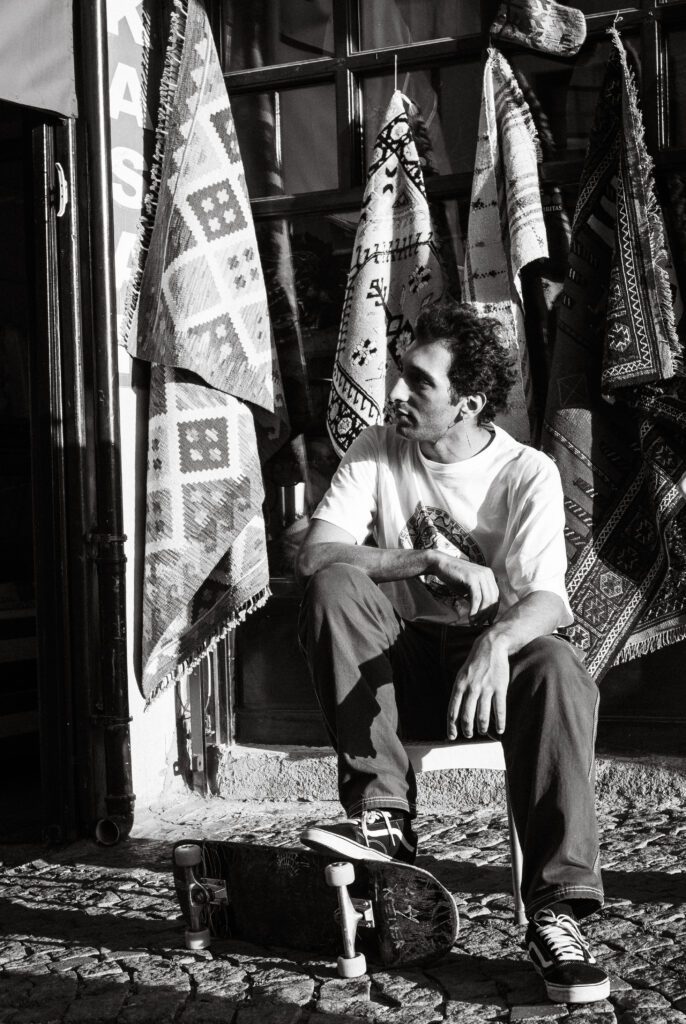
Practicing Falling Techniques
Falling is an inevitable part of skateboarding, and learning how to fall safely can greatly reduce the risk of injury. It’s essential to practice falling techniques to protect yourself and minimize the impact of falls.
Learning to Fall Safely
When you feel yourself losing balance or falling, try to roll with the fall instead of resisting it. Tuck your body and roll with the momentum to distribute the impact across a larger area of your body, reducing the risk of injury.
Rolling or Sliding Out of Falls
In certain situations, rolling or sliding out of falls can minimize the impact and reduce the risk of injury. By sliding or rolling on your knees or forearms, you distribute the force of impact and decrease the chances of sprains or fractures.
Avoiding Injury by Tucking and Rolling
Tucking and rolling is a fundamental technique in falling safely. By tucking your body and rolling with the fall, you protect vulnerable body parts, such as your head, neck, and wrists. Practicing this technique will help you minimize injuries and build confidence in navigating falls.
Protecting Vulnerable Body Parts
Certain body parts are more prone to injuries in skateboarding, such as the wrists, ankles, and head. Wear proper protective gear, such as wrist guards, helmets, and supportive shoes, to protect these vulnerable areas and reduce the risk of serious injuries.
Introduction to Skateboarding Tricks
Once you’ve mastered the fundamentals, it’s time to dive into the exciting world of skateboarding tricks. Tricks allow you to express your creativity and style and add flair to your skateboarding.
Understanding the Basics of Tricks
Skateboarding tricks involve a combination of coordinated movements, balance, and timing. Start with simple tricks that are within your skill level and gradually progress to more complex maneuvers. Each trick has its own set of steps and techniques, so take the time to understand the basics before attempting them.
Starting with Simple Flatground Tricks
Flatground tricks are tricks performed on flat surfaces without the use of obstacles or ramps. They are a great starting point for beginners as they allow you to focus on your technique and the foundational aspects of skateboarding tricks. Examples of flatground tricks include ollies, kickflips, and heelflips.
Exploring Ramp and Transition Tricks
Ramp and transition tricks involve performing maneuvers on ramps, bowls, or other curved surfaces. They require a different set of skills and techniques compared to flatground tricks. Examples of ramp and transition tricks include airs, grinds, and lip tricks. Start with smaller obstacles and gradually progress to larger ones as you gain confidence and experience.
Progressing to Intermediate and Advanced Tricks
As you become more comfortable with skateboarding tricks, it’s natural to want to progress and challenge yourself. Intermediate and advanced tricks involve more complex movements, technical elements, and higher levels of risk. Examples of intermediate and advanced tricks include 360 flips, handrails, and flip tricks down stairs. Always prioritize safety and progress at your own pace when attempting these tricks.
Developing Skateboard Maintenance Skills
To ensure the longevity and optimal performance of your skateboard, it’s important to develop basic maintenance skills. Regular maintenance will prolong the life of your equipment and ensure a smooth and safe ride.
Cleaning and Checking the Skateboard
Regularly cleaning your skateboard helps to remove dirt, debris, and grime that can affect its performance. Use a damp cloth or a skateboard-specific cleaner to wipe down the deck, trucks, and wheels. Additionally, perform routine checks to ensure that all components are tight, secure, and in good condition.
Replacing Worn-out Components
Skateboard components, such as wheels, bearings, and grip tape, wear out over time with regular use. It’s important to periodically check and replace these components to maintain optimal performance and safety. Look for signs of wear, such as flat spots on wheels or a loss of grip on the grip tape, and replace them as needed.
Understanding and Adjusting Skateboard Bearings
Skateboard bearings are essential for smooth and efficient rolling. Over time, bearings can become dirty or worn out, affecting the performance of your skateboard. Understand the basics of skateboard bearings, such as ABEC ratings, and learn how to clean and lubricate them to ensure they spin freely and smoothly.
Applying Grip Tape
Grip tape provides traction and grip for your feet on the skateboard deck. Over time, grip tape can wear out or become less effective. Learn how to replace grip tape using proper techniques to ensure a secure and grippy surface, preventing slips and accidents while riding.
In conclusion, mastering the fundamental basics of skateboarding is crucial for beginners who want to progress and excel in the sport. Whether it’s choosing the right skateboard, wearing the appropriate protective gear, practicing proper body movements, or learning various tricks, each aspect plays a vital role in becoming a skilled skateboarder. Remember to practice regularly, stay safe, and have fun as you embark on your skateboarding journey!

